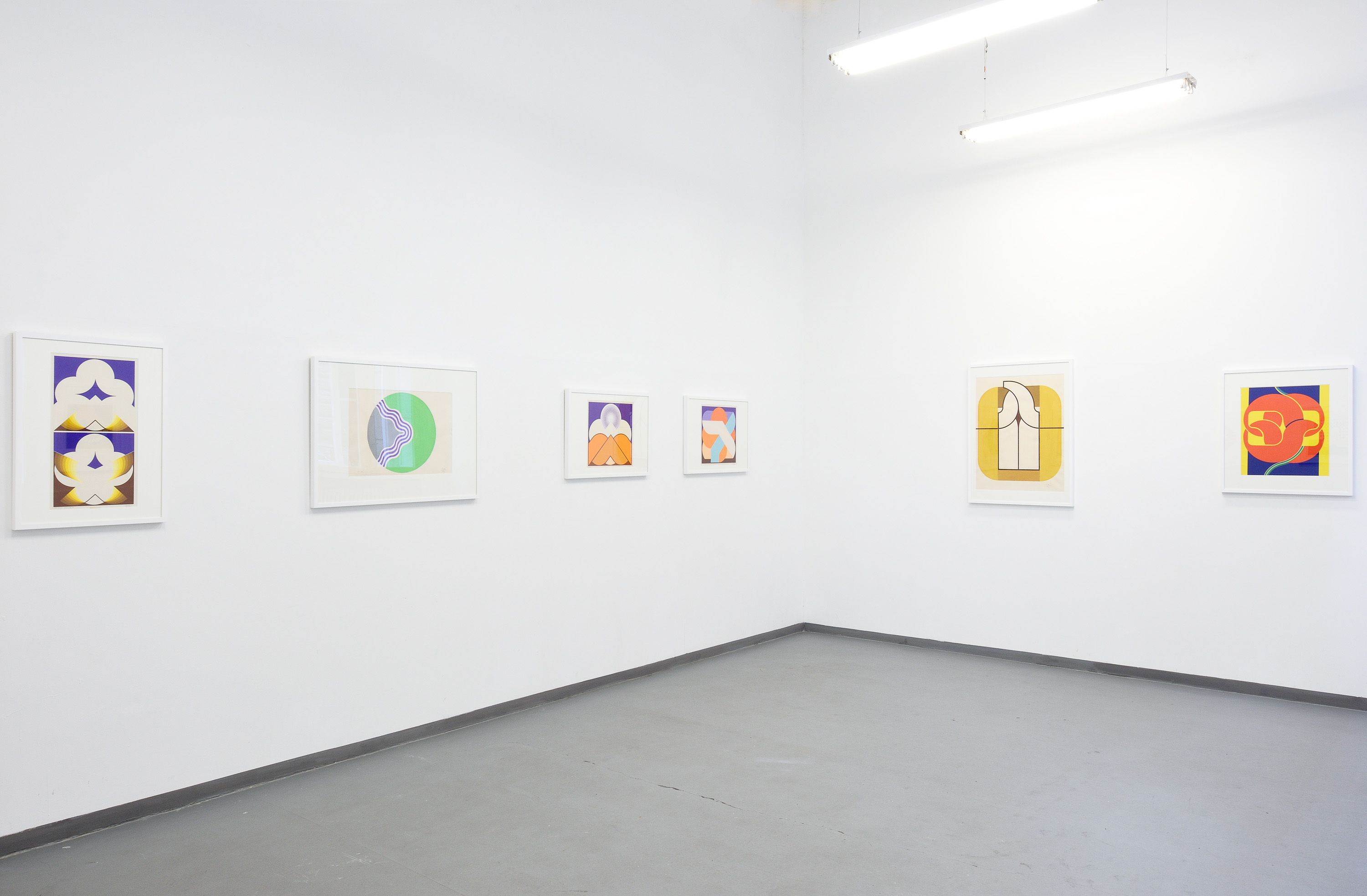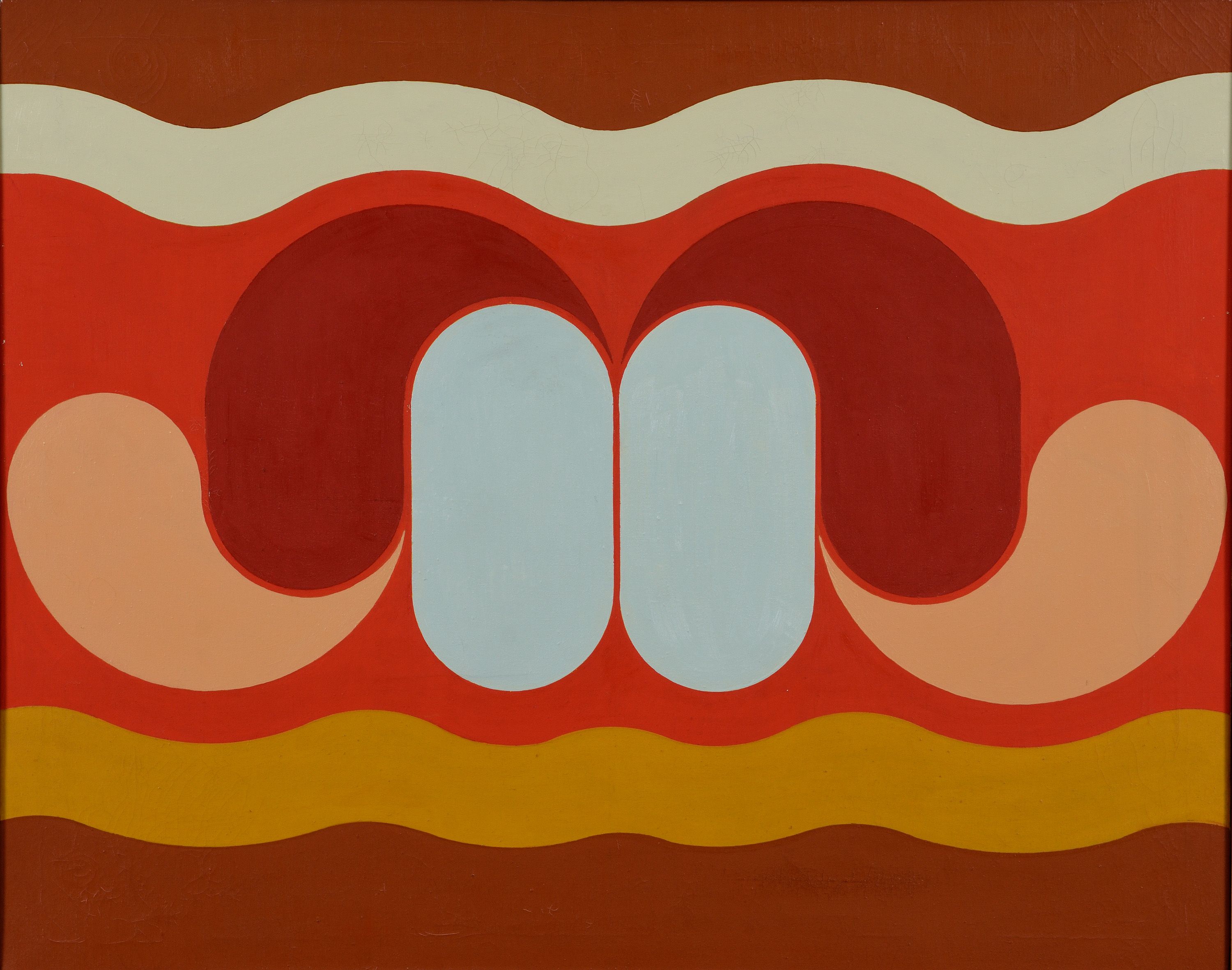István B. Gellér
Embracing Forms
| Venue: | acb Attachment |
| Date: | Jun 07 – Jul 26, 2019 |
Description
The first solo exhibition of B. István Gellér (1946 - 2018) to be organised at the acb Gallery introduces his tempera paintings from the seventies. Born in Pécs, the artist developed a geometric painting style of personal tone based on contemporary international tendencies and the artistic traditions of his hometown, a programme that stands out with its uniqueness among Hungarian neo-avant-garde tendencies. Featuring softer lines, yet composed with rigorous symmetry, his emblematic structures from the 1970s, also characteristic of his acrylic and tempera paintings, are distinctive Hungarian instances of signal painting, a tendency close to pop art.
One of the main concerns of progressive Hungarian painting emerging in the sixties was the reconciliation of global trends with local traditions, which defined the creative programme of B. István Gellér, similarly to his peers. The still living, internationally renowned Hungarian artists of the classical avant-garde and post-1945 abstraction had great significance to emerging artists in terms of artistic problems and intellectual attitude alike. While to the youth of Budapest, the intellectual legacy of the European School and its stylistic endeavours related to international abstraction became directly accessible most of all through Dezső Korniss, who represented Hungarian surrealism and nonfigurative art, to the emerging artists of Pécs, a former member of the more geometrically inclined French Abstraction-Création group, the painter, sculptor and graphic artist Ferenc Martyn served as a similar channel.
B. István Gellér was still practically a child when his passion for drawing led him to Ferenc Martyn and then during his studies at the Polytechnic of Construction Industry, to the free school of Ferenc Lantos. Starting his career as a disciple of Martyn, Ferenc Lantos launched his drawing workshop in the early sixties, simultaneously with developing his programme of visual pedagogy. The experimental quality of the geometric endeavours in various media emerging thanks to Lantos and his disciples – including B. Gellér and members of the Pécs Workshop later on – elevated Pécs into an art scene unparalleled in the country. Discarding the academic tradition, Lantos based his programme on modern and contemporary European painting, which he perfected by the early seventies by deconstructing natural landscapes into geometric shapes. Although the younger generation disposed of Martyn’s organic form-set, with the mediation of Lantos, they centred their visual experiments on the structural composition principle that was also Martyn’s legacy.
In addition to the master-pupil relation to Ferenc Martyn and Lantos’s abstract form-set, B. Gellér’s journey to Western Europe at the end of the sixties also made a deep impression on him: during his sojourn in London, he saw the works of Bridget Riley, Frank Stella and Victor Vasarely. Fusing his fresh international experiences with the artistic traditions of Pécs, he developed his organic, symbolic geometric formal language, with which he intended to engender an internationally relevant local artistic language of personal tone. His recurrent motifs include the anthropomorphic triangle composed of three crescents and soft cusps, the ‘embracing’ forms and the quadratic, perspectival box-space. He endowed the geometric shapes, which filled the entire image space, with personal meanings far from the essence of geometry. He was more interested in a lyrical transformation of symbols than in theoretical problems. He worked on developing a “geometry of personal authenticity” that was based on individual truths instead of metaphysical problems.
The exhibition was supported by NKA.


